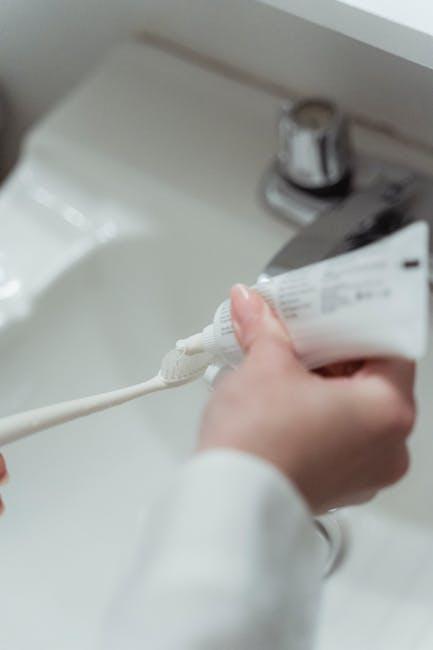
Fluoridation: Science and Facts – S6E02 – American Dental Association
Water fluoridation has been a crucial public health advancement for over 70 years, significantly reducing tooth decay across the globe. In the enlightening episode “Fluoridation: Science and Facts – S6E02” presented by the American Dental Association (ADA), experts break down the scientific research, health benefits, and safety of community water fluoridation. If you’ve ever wondered what fluoride does for your teeth or how it positively impacts public dental health, this comprehensive overview will provide valuable insights and evidence-backed facts.
What Is Fluoridation?
Fluoridation refers to the controlled addition of fluoride — a naturally occurring mineral — to public water supplies, aiming to prevent tooth decay and improve oral health on a broad scale. The ADA endorses fluoridation as a safe, cost-effective, and efficient preventative measure that benefits children and adults alike by strengthening tooth enamel and making teeth more resistant to acid attacks from bacteria in the mouth.
The Science Behind Fluoride and Dental Health
Fluoride works primarily by:
- Remineralizing early signs of tooth decay by restoring minerals in enamel
- Inhibiting bacteria in dental plaque from producing acids that erode teeth
- Reducing enamel susceptibility to acid attacks
Numerous high-quality scientific studies have confirmed fluoride’s role in lowering cavity rates by approximately 25% in children and adults. This effect significantly reduces the need for costly dental treatments and improves quality of life.
Key Facts About Fluoride
| Fact | Explanation |
|---|---|
| Optimal Fluoride Level | 0.7 milligrams per liter (mg/L) in drinking water as recommended by the U.S. Public Health Service |
| Health Agencies Support | Endorsed by ADA, CDC, WHO, and many dental health organizations worldwide |
| Cost-Effectiveness | Every $1 invested in fluoridation saves $38 in dental treatment costs |
| Safety Profile | Extensively studied and considered safe when maintained at recommended levels |
| Public Health Impact | Reduces tooth decay for both children and adults by 25–35% |
Benefits of Fluoridation
Fluoridation offers a wide range of advantages beyond simple cavity prevention:
- Equitable Oral Health: Benefits all community members regardless of age, income, or access to dental care.
- Cavity Prevention: Significantly reduces incidence of dental caries, the most common chronic childhood disease.
- Supports Remineralization: Helps reverse early enamel breakdown before cavities form.
- Cost Savings: Lessens the financial burden of dental treatments on families and healthcare systems.
- Community-wide Impact: Improves oral health at population level, reducing disparities.
Safety Considerations & Myths Debunked
Water fluoridation is one of the most researched public health measures ever. The ADA episode addresses common concerns and misconceptions, clarifying the following:
- Fluoride does not cause fluorosis when properly maintained: Mild dental fluorosis is rare and usually only cosmetic; optimal fluoride levels keep risks minimal.
- Fluoride is safe and effective at recommended levels: Toxicity concerns arise only from extremely high doses not used in drinking water.
- Fluoride doesn’t harm overall health: Research shows no credible links between water fluoridation and cancer, bone diseases, or neurological problems.
Practical Tips for Maximizing Fluoride Benefits
Besides drinking fluoridated water, you can enhance oral health by following these tips:
- Brush twice daily with fluoride toothpaste
- Use fluoride mouth rinses if recommended by your dentist
- Visit your dental provider regularly for check-ups and professional fluoride treatments
- Maintain a balanced diet low in sugary foods to reduce cavity risk
- Encourage children to use the right amount of fluoride toothpaste under supervision
Case Study: Impact of Fluoridation in U.S. Communities
Communities that have implemented water fluoridation consistently report lower dental decay rates. For example:
| Community | Pre-Fluoridation Decay Rate | Post-Fluoridation Decay Rate | Improvement |
|---|---|---|---|
| City A | 48% of children with cavities | 26% of children with cavities | 46% reduction |
| City B | 38% of adults with untreated decay | 21% of adults with untreated decay | 45% reduction |
Firsthand Experience: Testimonials from Dental Professionals
“Fluoridation has changed the landscape of dental health in my practice and community. I see fewer cavities in children and adults alike — it’s a true public health win.” — Dr. Rachel Thompson, DDS
“Our local fluoridation program is one of the best preventative health measures we have. It’s especially impactful in underserved areas where access to dental care is limited.” — Dr. Miguel Ortiz, Public Health Dentist
Conclusion: Why Fluoridation Matters Today
Fluoridation remains a cornerstone of preventative dental care, endorsed by leading health organizations including the American Dental Association, Centers for Disease Control and Prevention, and World Health Organization. By providing a safe, effective, and affordable way to reduce tooth decay — one of the most common health problems worldwide — community water fluoridation improves oral health equity and overall quality of life.
Whether you’re a concerned parent, a healthcare professional, or simply interested in science-backed health information, tuning into the ADA’s Fluoridation: Science and Facts – S6E02 episode will deepen your understanding and confidence in this vital public health practice.
Stay informed, practice good oral hygiene, and support community fluoridation efforts to keep smiles healthy for generations to come.


